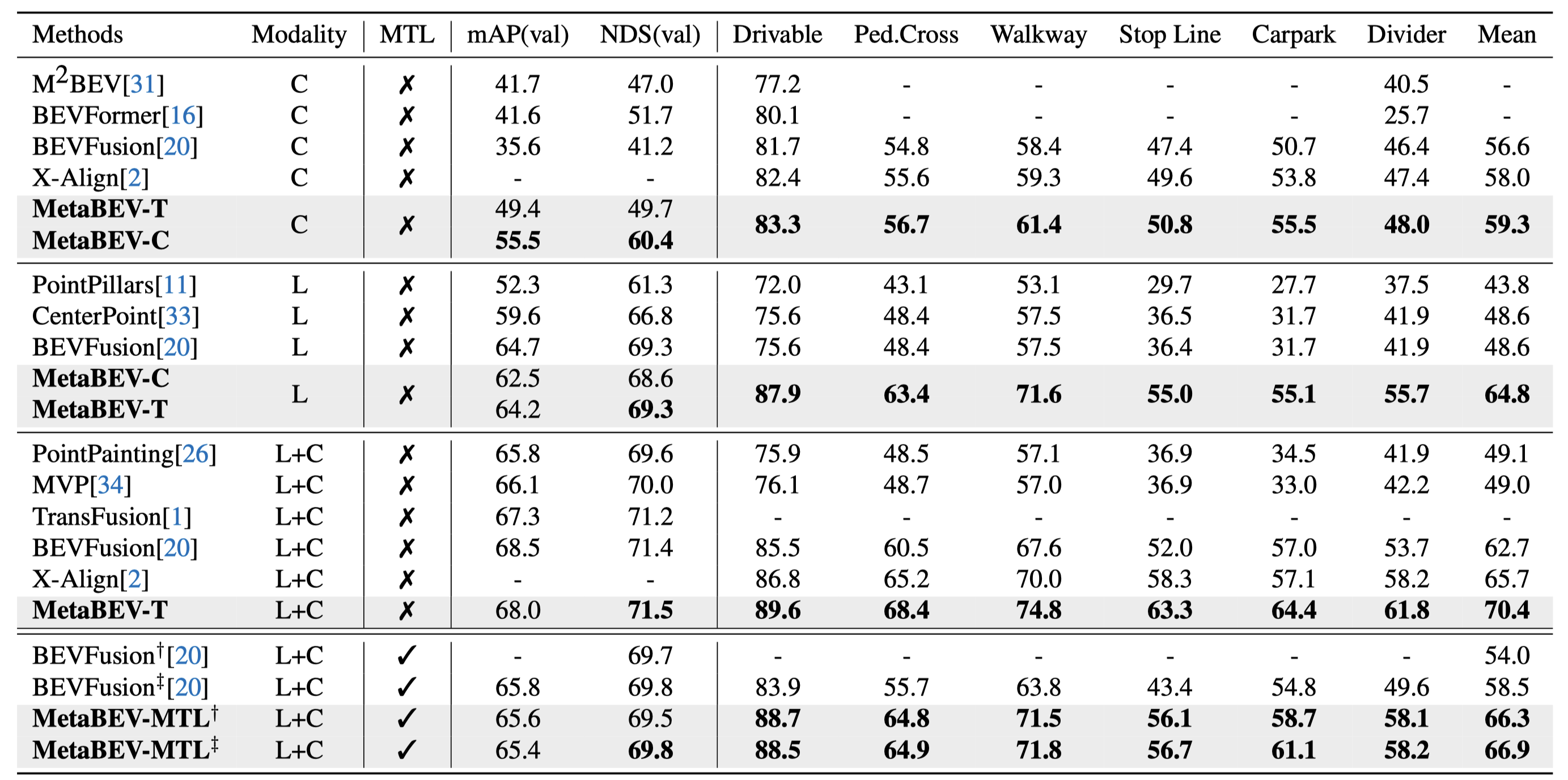Perception systems in modern autonomous driving vehicles typically take inputs from complementary multi-modal sensors, e.g., LiDAR and cameras.
However, in real-world applications, sensor corruptions and failures lead to inferior performances, thus compromising autonomous safety.
In this paper, we propose a robust framework, called MetaBEV, to address extreme real-world environments, involving overall six sensor corruptions and two extreme sensor-missing situations.
In MetaBEV, signals from multiple sensors are first processed by modal-specific encoders.
Subsequently, a set of dense BEV queries are initialized, termed meta-BEV.
These queries are then processed iteratively by a BEV-Evolving decoder, which selectively aggregates deep features from either LiDAR, cameras, or both modalities.
The updated BEV representations are further leveraged for multiple 3D prediction tasks.
Additionally, we introduce a new M^2oE structure to alleviate the performance drop on distinct tasks in multi-task joint learning.
Finally, MetaBEV is evaluated on the nuScenes dataset with 3D object detection and BEV map segmentation tasks.
Experiments show MetaBEV outperforms prior arts by a large margin on both full and corrupted modalities.
For instance, when the LiDAR signal is missing, MetaBEV improves 35.5% detection NDS and 17.7% segmentation mIoU upon the vanilla BEVFusion model;
and when the camera signal is absent, MetaBEV still achieves 69.2% NDS and 53.7% mIoU, which is even higher than previous works that perform on full-modalities.
Moreover, MetaBEV performs fairly against previous methods in both canonical perception and multi-task learning settings, refreshing state-of-the-art nuScenes BEV map segmentation with 70.4% mIoU.



